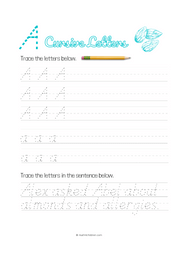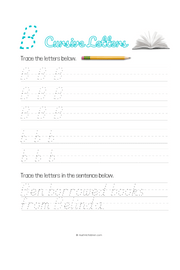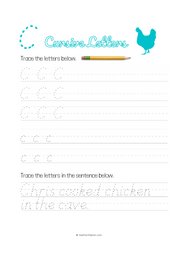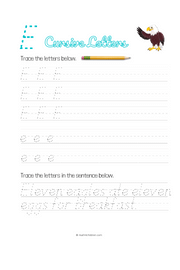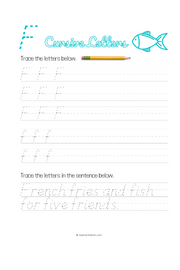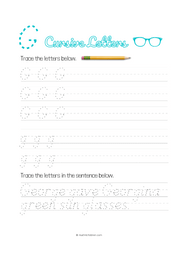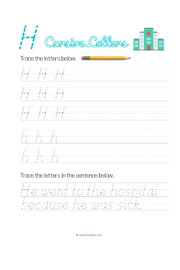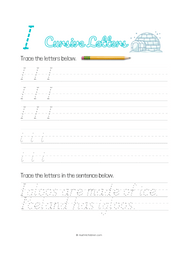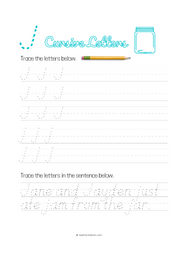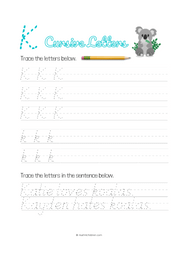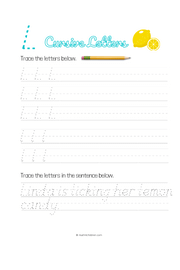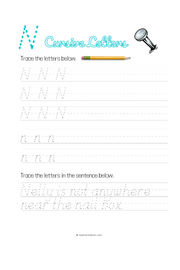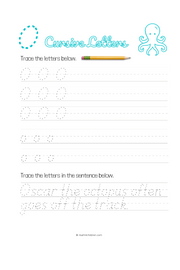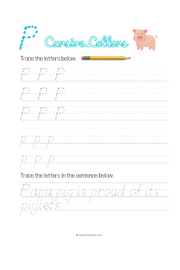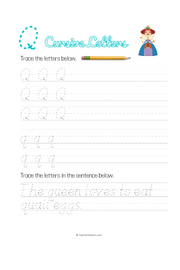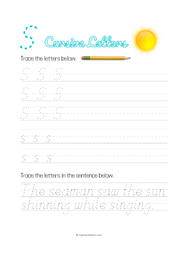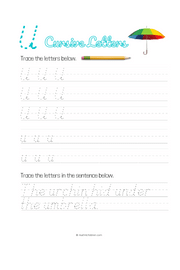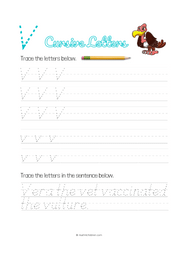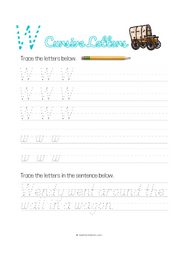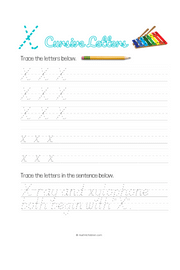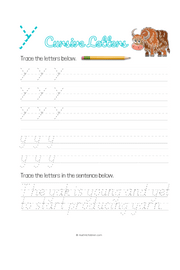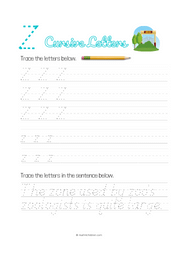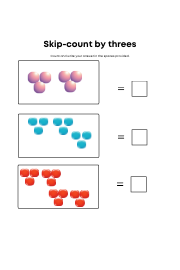Cursive D worksheet - Cursive capital and small letter D
Cursive handwriting is a form of penmanship where letters are connected to form words. One particular letter that stands out in cursive is the uppercase letter "D." When writing in cursive, the uppercase "D" can be a bit tricky, as it can easily be mistaken for an uppercase "C" or even an uppercase "G."
To write a cursive "D," start by making a loop at the top, similar to the cursive "c." Then, bring the line down and loop it back up to the top, forming a backward "c" shape. Finally, add a straight line on the right side to complete the letter.
Practicing cursive handwriting can be a fun and rewarding activity. It not only improves penmanship but also enhances fine motor skills and hand-eye coordination. Whether it's for personal enjoyment or academic requirements, developing neat and legible cursive handwriting can be a valuable skill.
Take the time to assist your child in learning how to write the cursive letter “D” correctly. They can readily make progress in developing their handwriting if they have access to the best letter “D” cursive writing worksheets available on this page. Cursive worksheets need to provide large and legible letter examples for your child to easily follow the stroke and direction needed to form each letter. It optimally contains several lined rows so your child can practice writing “D” in a consistent manner. Additionally, worksheets serve to help kids write words and names containing “D” in their spelling. When done properly, the cursive letter “D” perfectly captures the elegance and refinement of the cursive script. For beginners and young learners, however, it can take a fair bit of time to replicate this symbol in the correct manner. Let’s break down the anatomy of the “D” symbol for a moment. Starting with a downward stroke, the pen moves in a clockwise loop before making a large upward curl that terminates in a twirling flourish. Sometimes, the upward curl touches the upper tip of the vertical line, closing the letter - alternatively, the curl can simply fray off to make an “open-tipped letter D.” The decision to use either form is purely a matter of personal preference for kids.The lowercase “D,” as with other lowercase letters, is far simpler to write. All it takes is creating a c-like shape before making a looping vertical stroke. Multiple lowercase “d’s” can be stitched together quite easily.
Cursive D worksheet for kids
Welcome to our Cursive D worksheet for kids! This worksheet is designed to help children practice and improve their cursive handwriting skills by focusing on the letter D.
Cursive handwriting is an important skill for kids to learn, as it helps with fine motor skills, hand-eye coordination, and overall writing proficiency. However, learning cursive handwriting can be a challenge for some kids, which is where our Cursive D worksheet comes in. This worksheet is perfect for kids who are learning how to write in cursive, or for those who want to brush up on their cursive skills.
The worksheet includes a variety of exercises and activities that will help kids practice forming the letter D in cursive. These exercises are designed to be fun and engaging, so kids will stay motivated and interested in learning. Some of the activities included on the worksheet include tracing the letter D, filling in the missing letters in a cursive D word, and writing the letter D on their own.
In addition to helping kids practice forming the letter D in cursive, the worksheet also includes helpful tips and guidelines for proper cursive handwriting. These tips will help kids understand how to form the letter D correctly and consistently, which is essential for developing good handwriting habits.
To get started with our Cursive D worksheet for kids, simply download the worksheet for free. It's a quick and easy process that will give your child access to this fun and educational resource. Once you've downloaded the worksheet, you can print it out and have your child complete the exercises at their own pace. Alternatively, you can also use the worksheet digitally on a device such as a tablet or laptop.
The Cursive D worksheet for kids is a great way for kids to practice and improve their handwriting skills. Whether your child is just starting to learn cursive handwriting or they want to improve their existing skills, this worksheet is a valuable resource. Give it a try today and see the difference it can make!
In conclusion, our Cursive D worksheet for kids is an excellent tool for helping kids practice and improve their cursive handwriting skills. It's packed with fun and engaging exercises that will keep kids motivated and interested in learning. Plus, with helpful tips and guidelines for proper cursive handwriting, kids will learn how to form the letter D correctly and consistently. So why wait? Download our Cursive D worksheet for kids today and start helping your child develop their handwriting skills!
How to Master the Art of Writing in Cursive
At some point in our lives, we have all been exposed to cursive handwriting. Perhaps it was during our early school days when we first learned how to write. Or maybe it was when we received a heartfelt letter from a loved one. Whatever the case may be, there's no denying that cursive writing has a certain charm and elegance to it that's unmatched by other forms of writing.
For those who want to improve their cursive writing skills, look no further. In this article, we'll share some tips and tricks to help you master the art of writing in cursive.
-
Practice, Practice, Practice
The key to improving your cursive writing is to practice consistently. Start by writing the alphabet in cursive, then move on to words and eventually sentences. Set aside some time each day to practice your cursive writing, and you'll see an improvement in no time.
-
Use the Right Pen
Choosing the right pen is crucial to improving your cursive writing. A pen that's too thick or too thin can make it difficult to write legibly. Look for a pen with a medium point and smooth ink flow. This will allow you to write with ease and control.
-
Pay Attention to Spacing
Spacing is an important aspect of cursive writing. It's important to make sure that your letters are evenly spaced and that your words are not too close together or too far apart. This will make your writing look neater and more professional.
-
Develop Your Own Style
Cursive writing allows for a lot of personalization and creativity. Experiment with different letter shapes and styles until you find one that suits you. Your cursive writing should reflect your personality and individuality.
-
Slow Down
One of the most common mistakes people make when writing in cursive is going too fast. Writing too quickly can cause your letters to become illegible and messy. Take your time and write at a steady pace. This will help you maintain control and produce neater, more legible writing.
By following these tips, you'll be well on your way to mastering the art of writing in cursive. Remember, it takes time and practice to improve your skills, but with dedication and persistence, you can achieve your goals.
In conclusion, cursive writing is a beautiful and timeless art form that's worth preserving. By practicing regularly, using the right tools, paying attention to spacing, developing your own style, and slowing down, you can improve your cursive writing skills and impress everyone with your elegant penmanship.
How to Write D in Cursive: Tips and Benefits of Cursive Writing
Cursive writing is a form of handwriting where the letters are joined together in a flowing, connected manner. It is often used for writing formal letters, invitations, and other documents where legibility and elegance are important. Learning cursive writing has several benefits, including improving fine motor skills, enhancing hand-eye coordination, increasing writing speed, and boosting creativity.
To write a lowercase d in cursive, start with a loop at the top and curve it to the left before bringing it down and around to the right, ending with a straight line. To write an uppercase D in cursive, start with a loop at the top, bring it down and around to the left, then up and over to the right before bringing it down and around to the left again, ending with a straight line.
Here are some tips for improving your cursive writing skills:
- Practice regularly: Like any skill, cursive writing requires practice to master. Set aside some time each day to practice your writing.
- Start with basic shapes and progress to letters and words: Before
jumping right into writing letters and words, it can be helpful to practice basic shapes like circles, loops, and lines to get a feel for how cursive writing flows.
- Use a comfortable grip and hold the pen correctly: Make sure you hold the pen or pencil in a way that is comfortable for you, and that allows you to move smoothly across the page.
- Use lined paper to help with spacing and consistency: Lined paper can be a helpful tool for practicing cursive writing, as it can help you maintain consistent spacing and letter size.
- Focus on smooth, flowing movements: Cursive writing should be smooth and flowing, with each letter connecting to the next in a seamless way. Focus on making your movements fluid and natural.
- Use a consistent slant: Cursive writing typically has a consistent slant, with letters leaning to the right. Try to maintain this slant throughout your writing.
- Experiment with different writing styles to find what works best for you: There are many different styles of cursive writing, and it can be helpful to experiment with different styles to find one that feels comfortable and natural for you.
In conclusion, learning how to write in cursive can be a fun and rewarding experience. Whether you are looking to improve your handwriting for personal or professional reasons, following these tips can help you master the art of cursive writing. By practicing regularly and focusing on smooth, flowing movements, you can write the letter D in cursive with confidence and ease.
Printable Cursive Letter Worksheets A to Z Free


